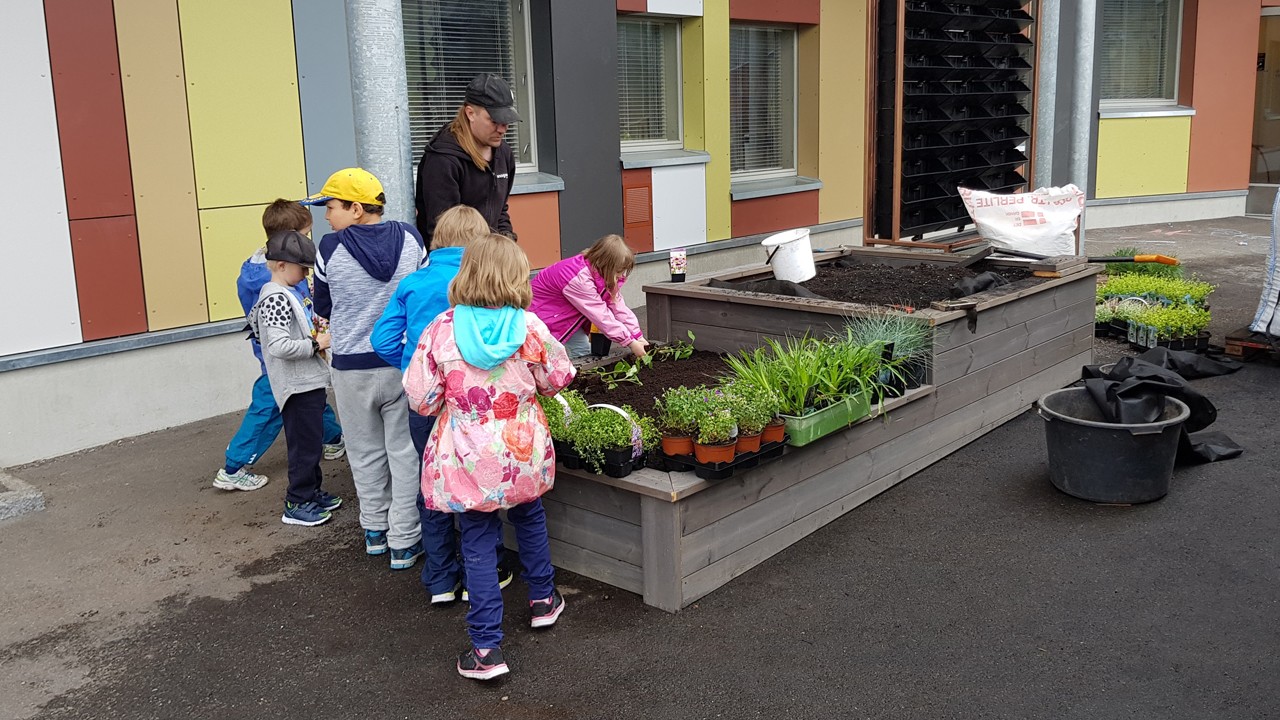Our website uses cookies. We analyze usage statistics collected based on them and they may be used for targeting advertising on other websites.
You can also reject the tracking and use of cookies. More information

Construction is under way on a rain garden in Kalastama, Helsinki, within the framework of the Smart Kalasatama project. In this blog we review the state of the project and explain how a rain garden works and why it is an especially good solution in urban conditions.
The structure of the rain garden in Kalasatama is complete and planting is currently under way. Schoolchildren at the Kalasatama primary school have been helping with the planting. While planting, they’ve learned about plants, gardening and circulation of rain water. “The project has already affected my life. I’ve learnt more about butterflies than I ever thought I would,” says our gardening wizard and one of the specialists in charge Mats Wikström, with a laugh.
Increasing biodiversity is an essential part of the project. The idea is that visitors, residents and children alike can document the diverse nature with their phones, especially the butterlies drawn in by the oasis. “A butterfly society and plant protection society offer their wide expertise for the project and even I’ve taken some of it on,” Mats smiles.

A big part of the Kalasatama area is covered by asphalt. This means that until now, all rainwater has basically ended up in the sewer system. The rain garden enables the utilisation of rainwater. Water is directed from the roof through chutes into the rain garden system, where the plants can use it even when it’s not raining.
The plants in the rain garden absorb rainwater and bind harmful chemicals that would otherwise end up in groundwater. Water is also slowly filtered and absorbed through the structure of the pools. The rain garden lessens the burden on the sewer system and saves the drinking water used to water the plants. Its naturalness also saves the gardener’s time, effort and nerves. The rain garden is a gardening solution with minimal effort.
With the help of the Kalasatama project, we here at InnoGreen want to refine the structures of an urban oasis and find new ways to bring greenery to places which currently lack it. “Our vision of the city of the future is a space where nature, buildings and people are more closely connected, blurring the line between inside and outside”, emphasises Mats. “We want to increase people’s awareness of the importance of the water cycle and find new partners to execute this shared vision of a green future.”
Smart Kalasatama is a project aiming to make Kalasatama in Helsinki a resource-wise neighbourhood. “Resource-wise” means that the area is developed flexibly and through experiments together with residents, corporations, the City of Helsinki, and other actors. The vision is for smart city development innovations to save residents an hour each day.
The rain garden is a part of the Smart Kalasatama project’s agile piloting programme. The programme buys small experiments for the area to make innovative services available to residents. The programme aims to promote cooperative experiments between multiple actors and to stimulate the development of good concepts into service innovations and new business ventures.